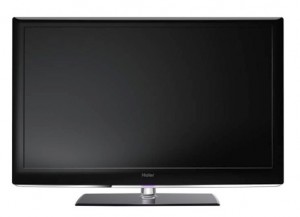 The International Telecommunication Union (ITU) announced that one of its working groups has drafted a new technical standard for Ultra High Definition Television (UHDTV).
The International Telecommunication Union (ITU) announced that one of its working groups has drafted a new technical standard for Ultra High Definition Television (UHDTV).
For more information visit: www.itu.int
Unedited press release follows:
Ultra High Definition Television: Threshold of a new age
ITU Recommendations on UHDTV standards agreed
Geneva, 24 May 2012 – ITU has announced a new Recommendation that represents a major advance in television broadcasting that will create an entirely new television broadcast environment with the advent of ‘Ultra High Definition Television’ or UHDTV. ITU’s Radiocommunication Sector (ITU-R) has developed the standard – or Recommendation – in collaboration with experts from the television industry, broadcasting organizations and regulatory institutions in its Study Group 6.
Ultra High Definition Television: A more defined future
The quality of television pictures that viewers see has improved dramatically since it was invented in the 1930s. A dim black and white screen in the corner of the room has become the sparkling ‘high definition’ colour picture that we see on today’s large ‘flat panel displays’.
But technology does not stand still. ITU-R Study Group 6 has now agreed a draft new Recommendation on the technical details for ‘Ultra High Definition Television’ or UHDTV which is now being submitted to Administrations for approval.
The ITU-R Recommendation lays out the quality standards for UHDTV in two steps. The advances made with each of these quality steps are roughly similar to the step from the old ‘standard definition television’ to ‘high definition television (HDTV)’. HDTV pictures today have the equivalent of between 1-2 megapixels. The first level of UHDTV picture levels has the equivalent of about 8 megapixels (3840 x 2160 image system), and the next level comes with the equivalent of about 32 megapixels (7680 x 4320 image system). As a shorthand way of describing them, they are sometimes called the ‘4K’ and ‘8K’ UHDTV systems.
Ultra high definition picture quality is accompanied by improved colour fidelity, and options for higher numbers of pictures per second than for today’s television systems.
ITU Secretary-General Hamadoun Touré praised the work of ITU-R Study Group 6. “UHDTV is an earth-shaking development in the world of television,” Dr Touré said. “Watching UHDTV in the near future will be a breath taking experience, and I look forward to it.”
David Wood, Chairman of ITU-R Working Party 6C (WP 6C), which developed the draft new Recommendation, said, “This is the dawn of a new age for television that will bring unprecedented levels of realism and viewer enjoyment. It’s a historic moment. Some years will pass before we see these systems in our homes, but come they will. The die is now cast, thanks to the untiring efforts of the international experts participating in WP6C.”
Chairman of ITU R Study Group 6 Christoph Dosch added, “This is clearly a major achievement for ITU-R Study Group 6 of which we can be proud. The Recommendation means that organizations around the world can safely begin work to make UHDTV a reality.”
Director of ITU’s Radiocommunication Bureau François Rancy said, “I’ve personally seen the pictures with 8K UHDTV system, and it’s absolutely stunning – the sense of being there is superb. This agreement shows the great and continuing strength of the ITU-R and Study Group 6.”
About ITU
ITU is the leading United Nations agency for information and communication technology. For over 145 years, ITU has coordinated the shared global use of the radio spectrum, promoted international cooperation in assigning satellite orbits, worked to improve communication infrastructure in the developing world, and established the worldwide standards that foster seamless interconnection of a vast range of communications systems. From broadband networks to new-generation wireless technologies, aeronautical and maritime navigation, radio astronomy, satellite-based meteorology and converging fixed-mobile phone, Internet and broadcasting technologies, ITU is committed to connecting the world.